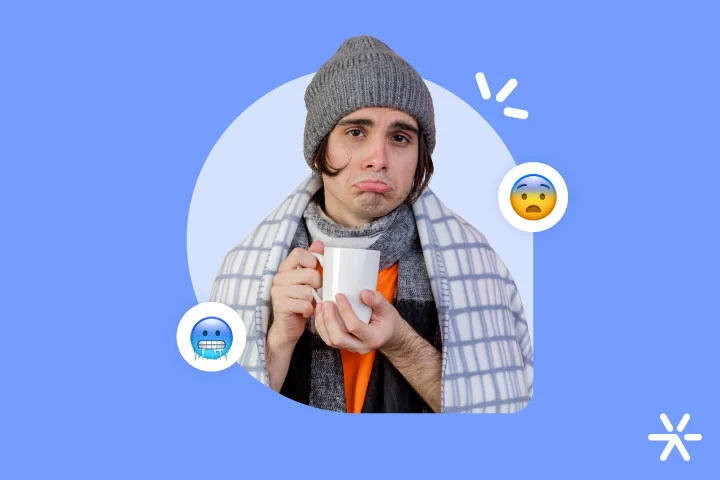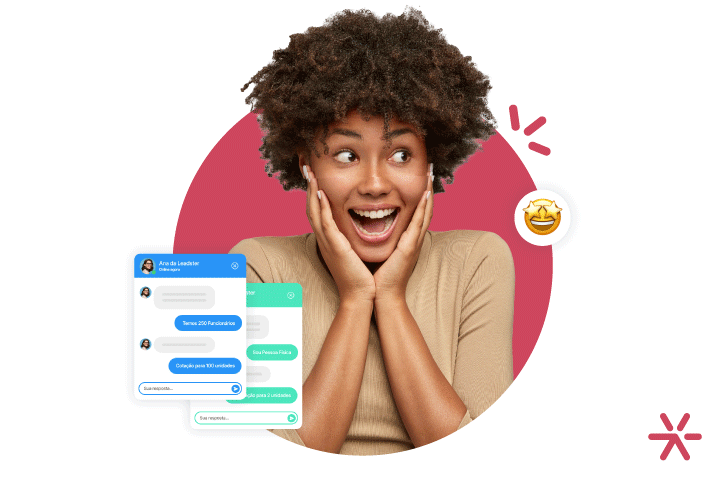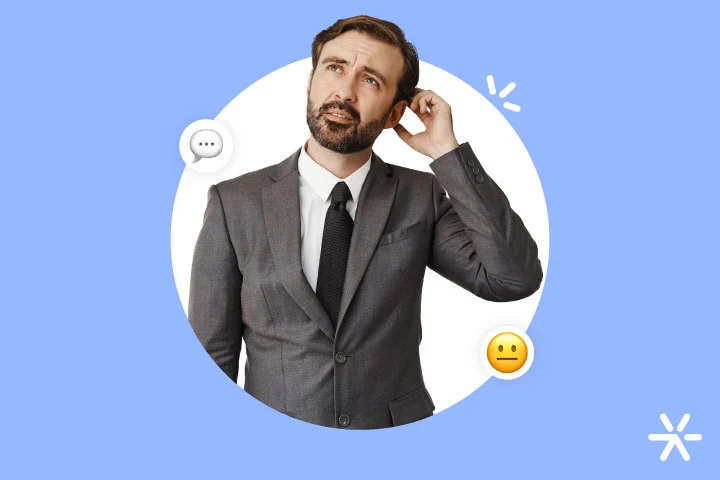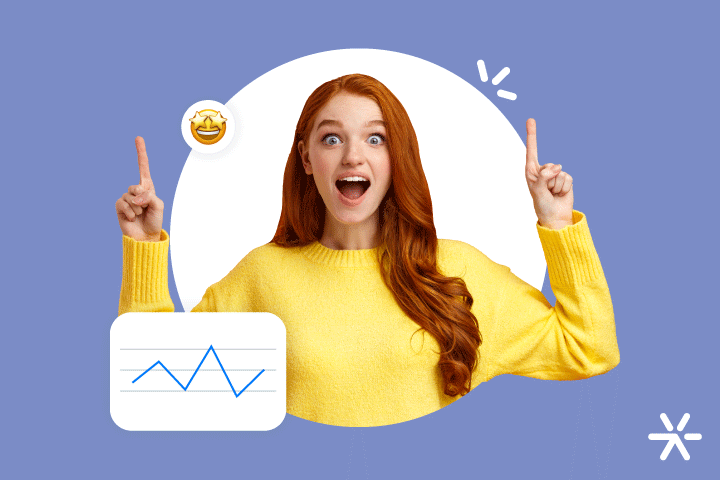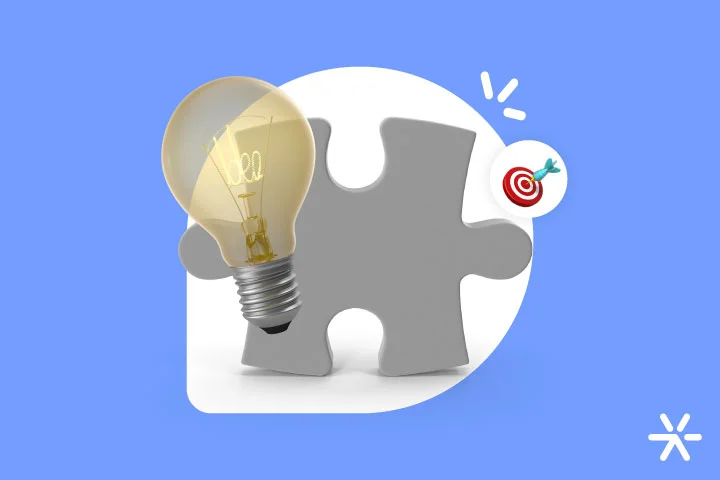How to Convert Cold Leads into Hot Leads?
What diferentiates a hot lead from a cold lead?
A hot lead is increasingly close to becoming a customer, meeting strategic qualification requirements and showing maturity regarding the purchase of the offered solution.
On the other hand, a cold lead is someone who, even if they meet qualification criteria, isn’t yet 100% engaged and ready to buy.
Let’s discover more about these lead categories, how to generate hot contacts, how to discard cold ones, and the best channels and ways to nurture them until the sale or hiring is completed.
What are leads?

In the marketing world, we call a potential consumer who has provided personal and contact information to a company a lead.
A user becomes a lead when they access a blog, website, landing page, among other communication channels, and fill out a contact form or chat with a chatbot, providing information such as name, email, and phone number.
From this first contact, your team is activated and receives information about this newly turned lead.
But not all leads will continue on the buying journey.
Many of them will abandon their attempts to contact and send content – and that’s where we separate hot leads from cold leads.
Let’s delve deeper:
What are hot leads?
Hot leads are those qualified and that stand out from the general base because they are highly interested in your solution and ready for an approach from your sales representative.
What are cold leads?
Cold leads are potential customers who have already shown interest in your brand but are currently ignoring your communications, thus not proceeding with the purchase.
Note that we should not confuse cold leads with unqualified leads.
Think of cold leads as disengaged, requiring effort to regain their attention.
Unqualified leads, on the other hand, are those who truly don’t fit the profile expected by your company.
How to differentiate a hot lead from a cold lead?
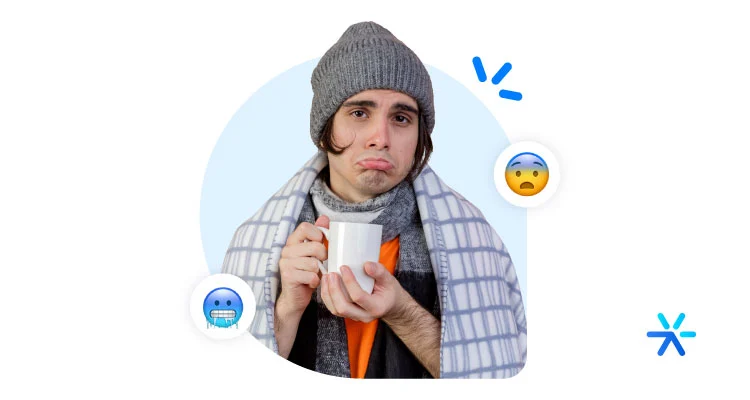
Not all generated leads will be hot leads.
The leads generated may indeed be interested in the offered solution, but perhaps they’re not yet at the right moment to close a deal.
Others may not have an urgency to purchase because they are still far from becoming opportunities or are still in other research phases.
That’s why it’s important to filter them through qualification criteria tied to the points we’ll see next.
Need for the product and timing
More than just interest in the solution you offer, a hot lead needs it at that exact moment to solve a specific problem they have.
They are already aware of this need and now just need to decide which brand will be chosen.
Budget and authority to close the sale
To be considered hot, a lead needs to have the budget and authority to close the deal.
This means they need to be the decision-maker and not just an influencer of the purchase, besides having the necessary purchasing power to become a customer.
Meets qualification criteria
In addition to being interested in the solution your company offers, a hot lead is also an interesting lead for your sales process.
Generally, they meet the qualification criteria defined by the team and fit the Ideal Customer Profile (ICP) designed by the brand.
Lead scoring and lead tracking
An objective way to measure the previous criteria and differentiate cold and hot leads is through lead scoring and lead tracking methodologies.
Lead scoring is a way to assign scores and classify potential customers to identify those with the most chance of closing a sale.
The scoring is done through a scoring system that follows criteria predefined by the company itself, and the lead scores as they perform new conversions and interact with the brand.
The other methodology is lead tracking, which tracks every action and interaction carried out by users.
Through lead tracking, you can identify when a lead accessed your pricing page or opened your email containing a commercial proposal, for example.
And through lead scoring, you can assign a higher score to that lead, so they have priority when receiving contact from the sales team.
Through these two functionalities, you maximize your lead characterization, enabling greater segmentation and real-time monitoring of each lead’s stage.
How to turn cold leads into hot leads?
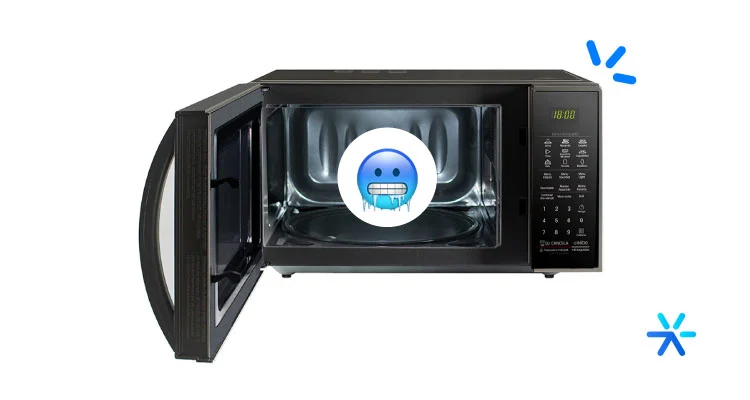
Just because some leads that enter your database aren’t warmed up doesn’t mean they should be neglected.
These contacts can turn into qualified leads and sales opportunities, but for that, your brand must guide them to that funnel stage.
To make this happen, you need to have the buying journey mapped out, as well as all the stages of the sales funnel.
With this mapping in hand, you and your team can prepare materials, content, actions, and campaigns designed for each stage of the consumer.
Through automation, nurturing, and qualification tools, leads are worked on, and the most qualified ones become heated leads at the right time for their needs.
Here are some tips to warm up your cold lead, and to complete the explanation, in the infographic below, you see in a very objective way the path to make your lead hot. Check it out!
Understand your consumer’s journey
How will you engage your lead without even knowing what stage they are in?
That’s why understanding the consumer’s journey becomes essential, as it allows you to understand their desires, needs, and challenges.
To have this information on hand, conduct surveys and constantly talk to customers to better understand their journey and how to help other leads with the same profile progress in the funnel.
Excel at pre-qualification
A bad lead that slipped through the qualification process is unlikely to turn into a hot lead out of nowhere.
That’s why you need to invest in good pre-qualification.
Only then can you understand if it’s worth investing in a lead or not.
It’s also part of the process to know when to discard a bad lead.
To help you in this process, Leadster has created a complete content with ready-made qualification questions for you to use, take a look: 50 lead qualification questions with explanation!
Invest in demand generation
Is your lead not yet ready to buy?
It’s time to switch from a lead generation strategy to a demand generation strategy.
This tactic is nothing more than a set of actions aimed at arousing consumer interest in your product and the problem you solve.
Since the need is not yet apparent to the user, more time needs to be invested in education to open their eyes to the problem.
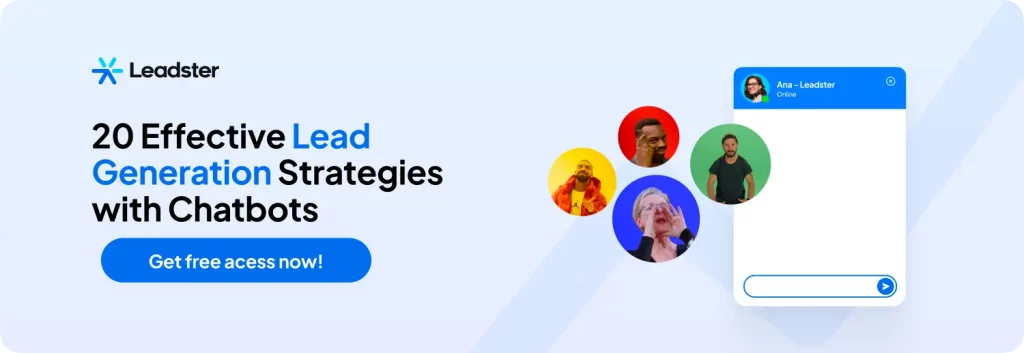
Use email, WhatsApp, and social media in your nurturing strategy
A nurturing strategy isn’t just about email marketing!
Of course, it’s one of the main channels in your nurturing strategy, but that doesn’t mean WhatsApp and other social media platforms can’t be part of this action.
Take advantage of these other media to offer closer, personalized communication that engages the consumer more easily.
Work well with your remarketing
With remarketing, you can approach a user who has already interacted with the brand and shown interest in it at some point.
This strategy is ideal for turning cold leads into hot leads since its goal is to impact users who already know the company and, for some specific reason, have not yet completed the purchase.
Don’t sideline branding
Do you want your brand to be the first choice when the consumer is ready to buy?
Invest in well-built branding and position your brand in the right places.
By establishing your brand in the market, applying branding to paid campaigns, marketing channels, content, etc., you increase the chances of being remembered and chosen at the right time.
How to work with a hot lead?
Hot leads can also cool off.
So, if you notice that the lead is hot, don’t waste time: go for it and close the deal.
To make everything work smoothly, you need to take some precautions and actions to keep them interested and, more importantly, not run the risk of them closing a deal with a competitor.
Here are four tips on how to nurture a hot lead and increase the chances of turning them into a customer:
Respond quickly
Time is a keyword when it comes to hot leads.
And in this case, response time is even more critical since hot leads tend to be in a hurry to solve their doubts about the product or service.
Thus, the lead may look for specific information on your website, send a message through a brand’s contact channel, or even request direct contact from your sales team.
When this happens, the response should be elaborated as quickly as possible.
According to a Drift survey, if leads are not responded to within five minutes, they may be completely lost.
And according to the same survey, 58% of companies don’t even respond in any way when a lead requests contact.
This means that responding quickly not only increases your response rates and conversion chances but can also be a differential against the competition.
Give them a product demo
Another way to further heat up a qualified lead is by offering a demonstration or free trial of your product.
Experiencing your solution firsthand can be the detail that was missing for them to close the deal.
In addition, with this type of action, you build a relationship, make the customer feel special, show that you are attentive to their needs, and demonstrate confidence in the solution offered.
Constant follow-ups
Just because the consumer requested a quote doesn’t mean the purchase is guaranteed.
Sales objections can always arise, and it’s super important that you’re ready to address them.
In addition to being prepared for obstacles along the way, it’s essential to make constant follow-ups to answer questions and not let the relationship cool down.
Share case studies
What better way to argue with a heated lead than to show them the real results they can achieve by closing a deal with your company?
Testimonials from other customers and case studies are excellent tools for this, especially if they are from the same segment or have a profile similar to the lead you are trying to close.
Common mistakes with cold leads

It’s not just lack of interest that forms a cold lead.
In fact, there are some mistakes along the lead generation strategy that can lead to this scenario.
Thinking about this, we have separated here the three most common mistakes that can be one of the causes of cold leads. Check it out!
Purchased or third-party provided lead lists
Purchased or third-party lead lists are documents with thousands of contacts captured in a non-organic way and often without the user’s permission to be shared.
What to expect from contacts that weren’t consented and that many times the person doesn’t even know what your company is?
Zero engagement – and possibly being marked as SPAM.
Avoiding this type of practice is the first lesson to avoid cold leads.
Lack or excess of communication
To avoid cold leads, it’s ideal not to err by excess or omission.
Communication is essential for your lead generation strategy, but that doesn’t mean you should overwhelm the user with emails, WhatsApp messages, and social media posts, nor that you should send just one piece of content and disappear.
It’s necessary to find a balance and plan your communication strategy very well, always taking into account the characteristics of your target audience.
Inappropriate message, content, or offer for the audience
Remember: everything you do in marketing must be aligned with your audience’s expectations and desires.
That is, be in the right channels for your consumers, create content that makes sense to them, and offer something that is truly worthwhile.
Otherwise, you’ll just be wasting time with materials that have no chance of generating truly interesting leads.
How to get hot leads?

We’ve seen tips to avoid cold leads and also how to warm them up and turn them into hot leads.
In this next topic, we’ll look at some strategies to generate warmer leads, prepared for purchase, reducing the sales cycle right away.
Bet on long-tail keywords
If you want to generate hot leads through SEO-focused content or ads on search networks like Google, invest in long-tail keywords.
Since they are more specific, they are linked to more direct search (and purchase) intentions.
Additionally, for paid campaigns, these keywords often have a lower cost because they also have lower competition.
Segmented campaigns on social networks
Social networks are also a great source of capturing warmer leads if good segmentation is done.
You can explore campaigns for all funnel stages and also remarketing to reach only the leads and thus work on their qualification and nurturing.
Dynamic bottom-of-the-funnel Landing Pages
For the entry of hot leads into your contact base, conversion hooks designed for the bottom of the funnel are essential.
For example, let’s say a construction company launched a development and wants to promote it.
One way to do this is to create a Landing Page, focused on those looking to buy a property with that profile, and direct campaigns to conversion, which is requesting the development catalog or even contact from the sales consultant.
You can explore, on this type of conversion page, customer cases, tools, free tests, product demonstrations, specialized consultations, etc.
In the case of bottom-of-the-funnel Landing Pages, don’t be afraid to ask qualification questions to ensure that the leads generated there are really close to making a purchase and to deter only curious visitors.
Produce technical campaigns or content on the blog
Good content attracts qualified leads, especially when it’s focused more on the middle and bottom of the funnel, to answer technical questions about the solutions sought.
By offering this type of content, either through a blog or a Landing Page offering materials, you bring qualified traffic to your pages, with specific needs, and increase the capture of warmer leads.
Active prospecting on professional social networks
For B2B companies, active prospecting can be a way to generate hot leads.
Through the profiles of each person, you can access information and get an idea of whether the contact is qualified for an approach.
Furthermore, since this is an open contact point, the approach is usually well-received.
Make sure to write a personalized text, showing that you understand the company’s needs and why you believe your solution would be interesting to them.
Co-marketing with partner companies
Co-marketing is a way to create bonds between companies and join forces to increase the reach of your content, campaigns, and materials for generating qualified leads.
With co-marketing actions, it’s possible to reach an audience that already has a relationship with the other brand.
For partnerships, look for companies aligned with yours to offer content that is relevant to both audiences.
Participation and sponsorship of industry events
Presence at industry events reinforces your brand’s image and is also another scenario for active prospecting.
As these events bring together companies in the sector that are looking at trends, innovations, and new solutions, the contacts present there can be relevant to your strategy for capturing hot leads.
Partnership and referral programs
Finally, we have partnership and referral programs that can leverage your lead generation and gain mostly hot leads.
In these two types of programs, you’ll be dealing with more mature and segmented leads because they will have already gone through a range of criteria from the partner company, in addition to better understanding the problem, solution, and even your brand.
Now that you already know what hot leads are, how to differentiate them from cold ones, and what to do to warm up your potential customers, what do you think about relying on an automatic SDR that will make your life easier?!
I’m talking about Leadster’s conversational marketing platform that will qualify your leads quickly and automatically and distribute them intelligently – including the lead scoring functionality.


